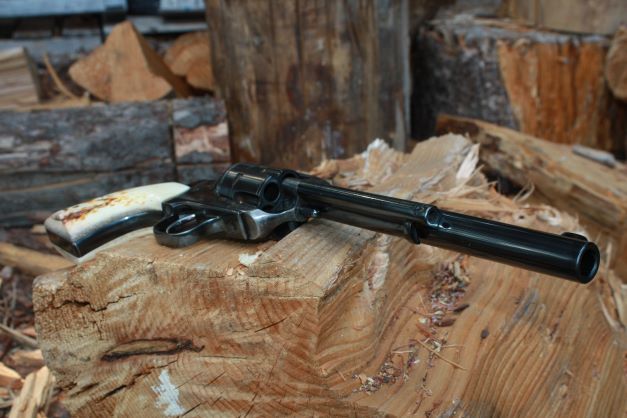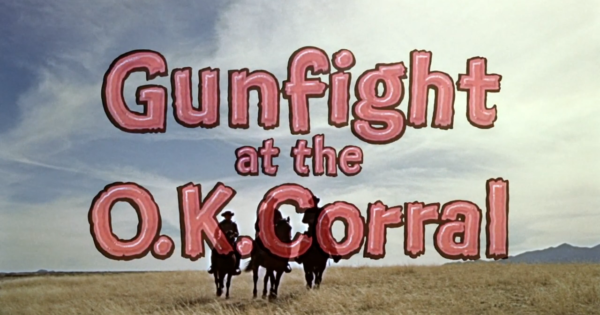
Today, Oct. 26, 1881 marks the 140th anniversary of the infamous “Gunfight at the OK Corral,” a misnomer because the shooting didn’t occur at the corral, but in an empty lot nearby next to Fly’s Photography Gallery in Tombstone, Ariz.
It has become the most famous shootout in the history of the Old West, though a one-on-one classic street gunfight between James Butler “Wild Bill” Hickok and Davis Tutt in Springfield, Mo., in July 1865 is certainly a contender. Hickok and Tutt quarreled over gambling and, by some accounts, a woman. Tutt missed, Hickok didn’t.
The duration of the Tombstone gun battle was approximately 30 seconds, during which 30 shots were fired, most at what would today be called point blank range, because when the shooting erupted, the nine men involved—Virgil, Wyatt and Morgan Earp, and Dr. John Henry “Doc” Holliday on one side, with Ike and Billy Clanton, Frank and Tom McLaury and Billy Claiborne on the other—were within a few feet of each other. At such close range, it would have been impossible for someone to not be killed or seriously wounded.
When the gunsmoke cleared, that was indeed the case. The McLaury brothers and Billy Clanton were mortally wounded, while Virgil and Morgan Earp and Holliday had been hit. Claiborne had fled the scene and Ike Clanton was also unscathed, having declared himself to be unarmed and fleeing.
Who fired first? Was the gunfight really necessary? Who were the bad guys? Who were the good guys? It all depends upon to whom one listens, and to which version of the incident one subscribes. Did the lawmen overstep their authority? Was the ban on carrying guns in Tombstone a Second Amendment violation (deprivation of rights under color of law)?
Quite possibly the most accurate depiction was in the 1994 Kevin Costner film “Wyatt Earp,” although the more popular film seems to be the 1993 Kurt Russell-Val Kilmer oater, “Tombstone.” For classic Hollywood inaccuracy, there’s John Ford’s “My Darling Clementine” with Henry Fonda, “Frontier Marshal” with Randolph Scott, and “Gunfight at the OK Corral” with Burt Lancaster and Kirk Douglas. James Garner’s “Hour of the Gun” was an entertaining film, but also with historical inaccuracies. Perhaps the best thing Hollywood did with the incident was create a haunting theme song for the Lancaster-Douglas film, sung by Frankie Lane, adding to this film’s consideration as a true classic.

Historically, there had been growing rivalry between the Earp and Clanton factions. The Cowboy faction were unquestionably criminals involved in robbery, rustling and other crimes, while the Earps were lawmen, enforcing what might today be considered an unconstitutional prohibition on the carrying of firearms within the Tombstone town limits. When taking people into custody, they frequently “pistol whipped” the suspects, an act that would land them in court today in any jurisdiction, especially one controlled by “defund police” liberals.
An interesting and well-researched telling can be found at Wikipedia, with plenty of footnote support. For another intriguing perspective, there was a piece published in The Hill in August 2020 by Steven Lubet, author of “Murder in Tombstone: The Forgotten Trial of Wyatt Earp.”
History has forgotten it was Virgil’s play, since he was the town marshal. Wyatt was just a deputy, yet he became the most famous participant. There was, indeed, a murder trial with the Earps and Holliday as defendants, all acquitted. In December 1881, Virgil was attacked and shot, leaving him disabled for the remainder of his life. The following March, Morgan was murdered while playing billiards. Thus began Wyatt’s vendetta ride during which he is known to have killed William “Curly Bill” Brocius.
Politics were also apparently part of the equation. The Earps were Republicans while the Cowboys were Democrats, according to various histories.
There is a rather detailed biography of Wyatt Earp at Wikipedia, complete with blemishes to his reputation. He had what today would be called a “colorful, storied life.”
It will likely never be known for sure who drew/fired first. Many believe the gunfight was ignited when Holliday loudly cocked the hammers of a double-barrel shotgun he’d been handed by Virgil, and at least one of the Clanton faction drew in apparent self-defense.
What is known for sure is that today is a milestone anniversary of an incident often brought up by anti-gun politicians throwing warnings about the carrying of defensive sidearms by private citizens: “It will be like the OK Corral,” they often proclaim, when they’re not trying to scare people by predicting “It will be like Dodge City!”
If “it” really did become “like the OK Corral,” one can safely assume the establishment media and Capitol Hill liberals would exploit the situation to demand public disarmament.